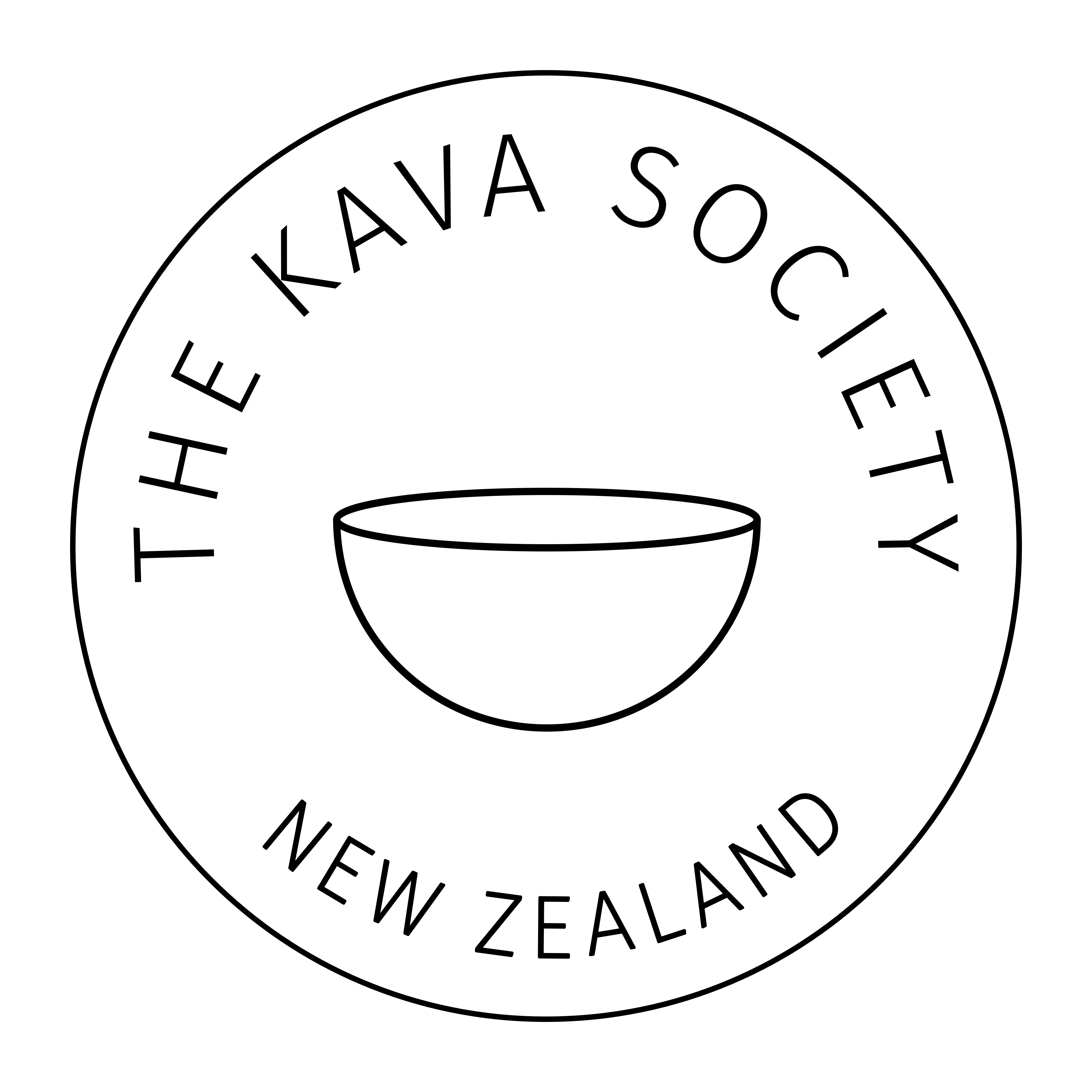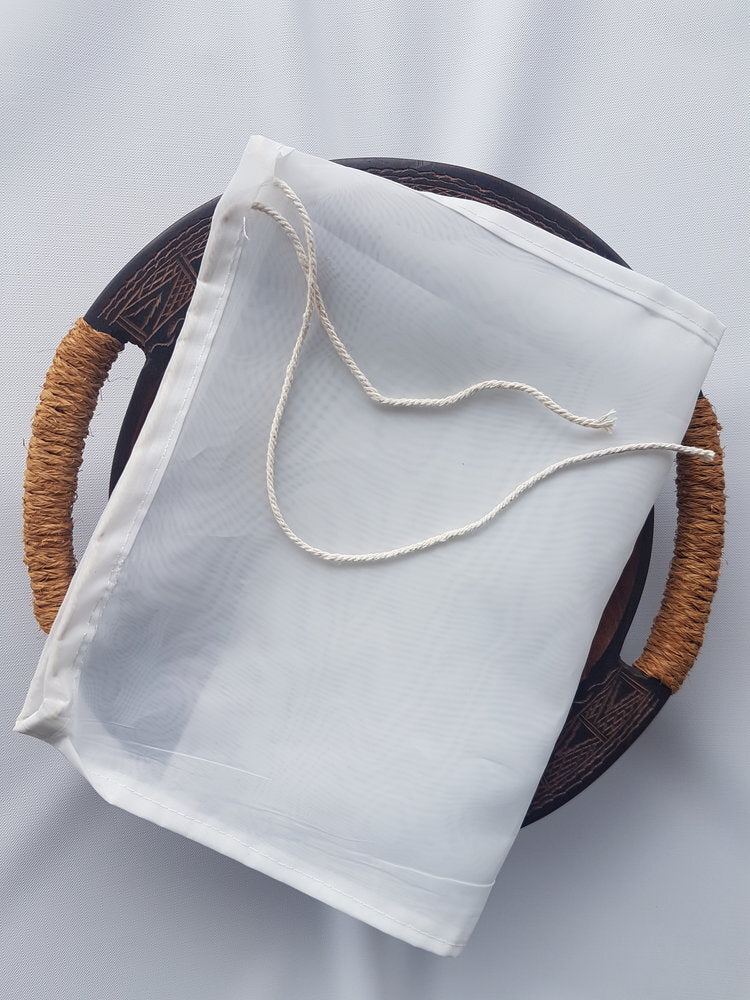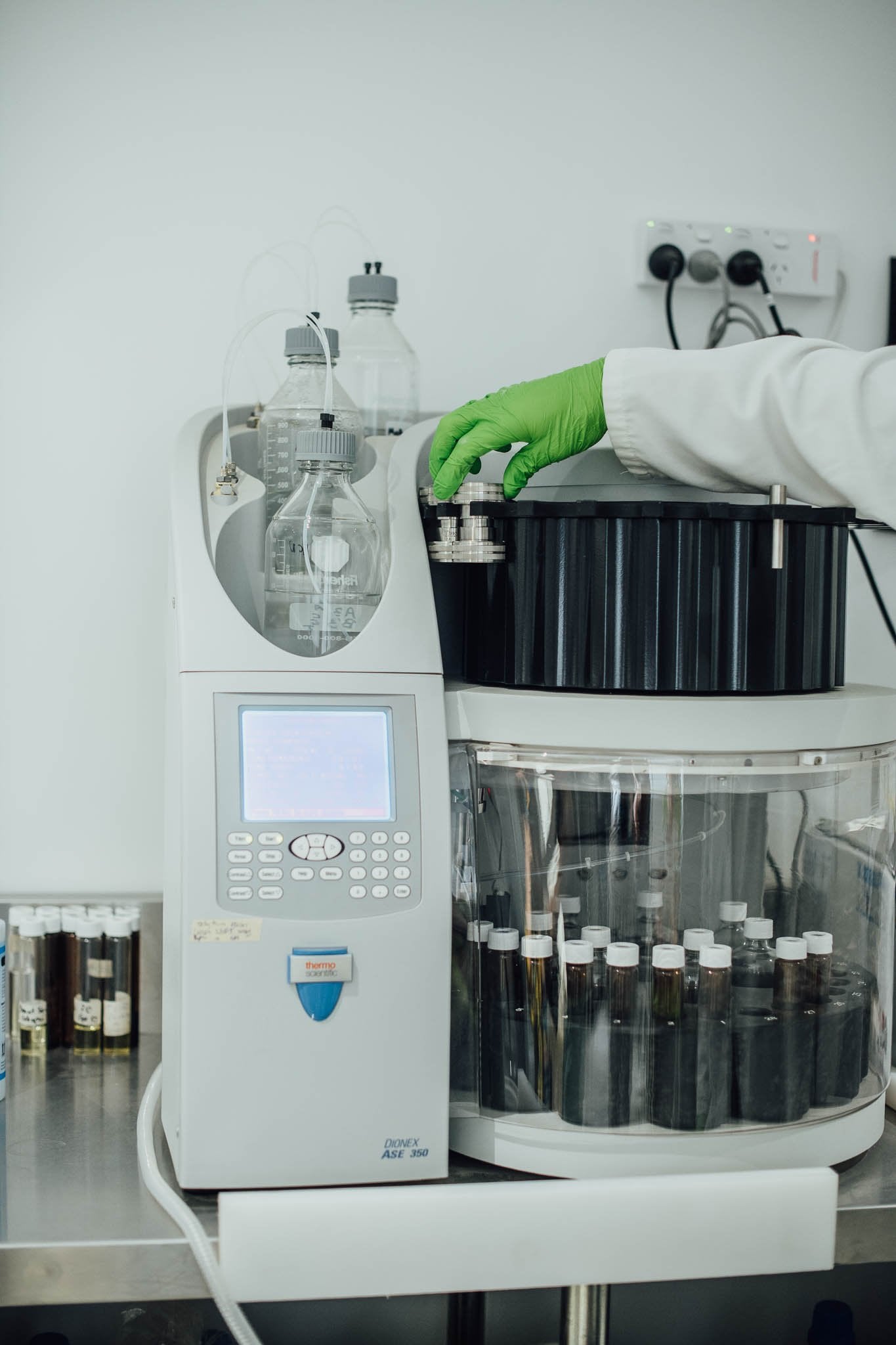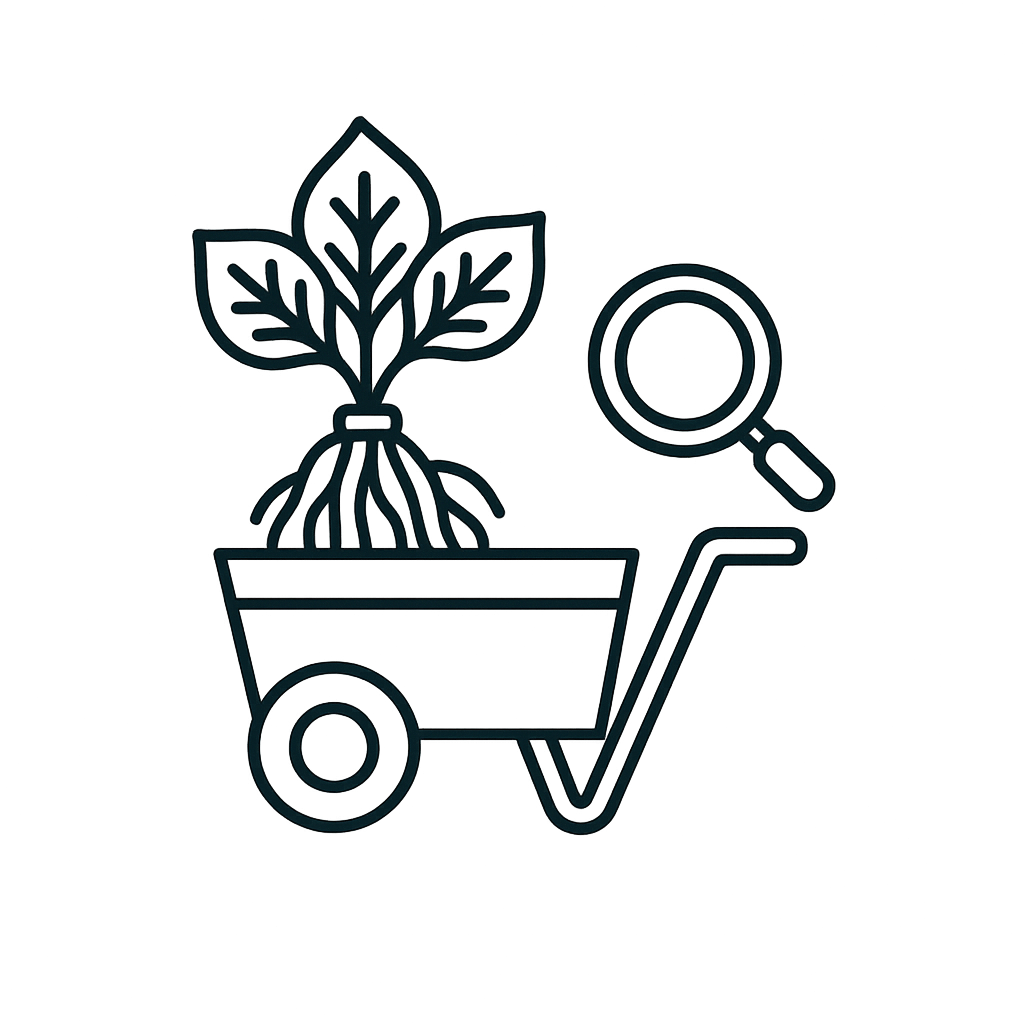What's the Best Kava? What's the Best Kava Cultivar?
Introduction
Many thanks to everyone with whom we’ve had a chance to chat about these things over the last couple of months, especially (in no particular order): Josh, Jimmy, Martin, Nick, Doug, Vincent, Ted, John. Thanks for the useful tips and insights. All errors are, of course, ours. We are also grateful to all the friends of kava who come, often quite regularly, to the Four Shells Kava Lounge in Auckland and whose feedback on cultivars and kava in general is always appreciated.

One of the most common (and perhaps rather obvious?) questions asked by those who are new to kava is: what’s the best kava? The fact that there are so many options, forms and types of kava (for some info on the key differences between types and forms of kava see this article) may be a bit overwhelming for anyone who has only just heard of/read about the plant (and drink) and may be still reluctant to give it a go, or just is unsure what the most appropriate choice might be.
“The Best” seems like a no-brainer for both experienced and new drinkers, but especially for the latter whom may still be on the fence and just want to give kava one honest try. Everyone wants to get good value for their money and, ideally, have the most enjoyable experience possible. It is thus not surprising that so many people want to be pointed in the direction of “the best” kava. At the very least, novice drinkers want to understand what “the best” might mean to make informed decisions about their purchases without having to figure things out by themselves the hard (and expensive) way (i.e. by trying all the kavas in the world and then deciding which ones they liked best!).
However, as with most other foods and drinks (especially the ones that have been around for centuries or millenia! think wine, beer, coffee, tea), any assessment of quality and desirability has a subjective element. Different people will have different preferences for varieties, processing techniques, flavour profiles, preparation methods and ways in which to consume a given substance to attain maximum enjoyment. Ultimately, we are all different and have different preferences.
While this is true, this doesn’t mean that there is no room for establishing and detecting any objective quality markers that align how human bodies in general respond to experiencing specific foods and substances. It’s clear that in aggregate, humans have displayed certain quality preferences and that those preferences have driven plant sections, processing techniques, methods of consumption etc. A combination of these preferences and knowledge acquired over decades or centuries is what creates ever evolving traditions and cultures around specific foods and beverages. We often forget that the fact that the food we eat doesn’t kill us, but instead provides us with nutrition and/or enjoyments results from countless of trials and errors undertaken by our ancestors. Over millenia we’ve figures out which plants are safe and we’ve consciously made efforts to promote the most desirable features/mutations in all the plants we consume. None of the fruits, vegetables or grains that we eat or drink everyday existed in exactly the same form 100,000 years ago. We’ve collectively worked to yield them to our taste, aesthetic and nutritional preferences. Likewise, we’ve perfected plant preparation and processing methods (including some methods that render otherwise toxic plants safe). The same principles can be observed in kava and its rich history.
History of Cultivar Selection

Directions of distribution and evolution of kava cultivars. Vanuatu, the birthplace of kava, is home to cultivars from all, but those found in the I group. The finest cultivars (group G and H) are the key traditional cultivars in Vanuatu, Tonga, Cook Islands, Niue, Samoa, and Tahiti. Solomon Islands grow some of the recently imported Vanuatu cultivars (both high and low quality). Hawaiian cultivars have fairly unique chemotypes (462, occasionally 426), but fairly consistant with their most likely lineage. Only Fiji cultivars stand out among the noble kavas due to their high concentrations of methysticine (number 6) and thus belong to their own unique group “I”.
source: https://ethnobotanyjournal.org/index.php/era/article/view/34/33
Dr Vincent Lebot (see our interview with Dr Lebot here) and Patricia Simeoni demonstrated in their research work that all the plants known today as kava (piper methysticum) originate from a narrow group (perhaps even just one) sterile cultivar selected from a mutation of a wild ancestral species known as piper whichmannii (wild kava). Piper wichmannii has some similarity in morphology and chemistry to modern kava, but, by our modern standards, it’s hardly drinkable. The beverage made from piper wichmannii is highly unpleasant in both taste and effects (including side-effects), with just a hint of any of the desirable kava characteristics. According to the most accepted hypothesis, the inhabitants of Northern Vanuatu likely consumed and perhaps grew piper wichmannii for some time until encountering (or obtaining) a more desirable, albeit sterile mutation of piper whichmanii perhaps as early as 3000 years ago. Unlike wild kava, the new sterile varieties required human efforts for propagation and were (and continue to be) much harder to grow. Yet, the superior effects of the mutation(s) were clearly sufficiently significant to justify the additional efforts. Over the ensuing centuries traditional farmers and kava drinkers of Vanuatu continued to consciously grow and select the most desirable (from the point of view of effects and, certainly to a lesser degree, taste) mutations of piper methysticum for further propagation (a process that continue to this day).
As described by Lebot and Simeoni in one of their papers:

source: https://ethnobotanyjournal.org/index.php/era/article/view/34/33
Kava was selected through vegetative propagation from a narrow genetic base in var. wichmannii as indicated by its limited isozyme and AFLP diversity. It is possible that cultivars have become sterile through the accumulation of mutations. Their morphological and chemical variability is largely the result of human selection and cloning of somatic mutations. The genealogy of kava cultivars from wild var. wichmannii to var. methysticum cultivars is a lineage of chemotypes (Figure 3). The evolution of these chemotypes appears to have resulted from human efforts to improve the plant’s useful traits, its psychoactive characteristics. Because selection is made each time a farmer uproots an individual plant for self consumption and experiments with its physiological effect, the domestication process is in fact a progression in clonal selection. This progression is based on a “trial and error” approach that involves elimination of plants giving a poor beverage and propagation of those from elite individuals.
While traditional farmers had no way of knowing what specific compounds determined the quality of their experience, they could still certainly determine which kavas produced more desirable effects and constantly selected and propagated mutations producing more enjoyble effects and with lower potential for causing any adverse effects (most notably, next day hangover). This centuries-long process has resulted in the evolution of kava’s chemotypes (i.e. the relative composition of specific kavalactones - the active ingredients resonsible for most of kava’s effects).
Today we can determine that kava growers and drinkers generally have had a strong preference for kava high in kavain and low in dihydromethysticine. Kavain is quickly metabolised and is considered to be responsible for the clean, fast, relatively short-lived but highly pleasant and mentally uplifting effects. Dihydromethysticine is slowly metabolised and generally associated with potential for causing longer-lasting feeling of lethargy (often extending to the next day) and is suspected of being more likely to cause nausea. There are also other kavalactones, including a “slower burning” dyhydrokavain (the effects of which are thought to be like a softer, more mellow but longer lasting version of kavain), yangonin (which is sometimes thought to be responsible for the clear-headed and peaceful state of attentive awareness of senses and the external environment), but the general direction of kava selection appears to have been mainly (though clearly not exclusively) driven by the preference for kavain over dihydromethysticine. This is also confirmed by the dominant chemotypes in kava cultivars carried over (and later propagated and further selected) by Melanesian and Polynesian migrants across the vast Pacific.
Chemotypes and Efforts to Quantify the Experience

Preparation of freshly harvested Bir Kar kava cultivar on the island of Espiritu Santo, Vanuatu (photo courtesy of Josh Fordham/Root and Pestle)
The correlation between high ratio of kavain to dihydromethysticine and desirability of cultivars/quality of kava experience is certainly strong. Indeed, some scholars have argued that this ratio (K/DHM) alone could be used as the simplest and quickest indicator of kava’s quality, not just because a high (>2) ratio signals desirable, noble grade cultivar, but also because even the best cultivars might have a low K/DHM ratio when harvested before maturing. Kava cultivars that have K/DHM ratio below 1 are almost guaranteed to be either wild (wichmannii) kava or the so-called “tudei” (not suitable for daily drinking) varieties. Both wild kava and the tudei cultivars (which likely constitute the earlier mutations of piper methysticum) also have relatively high concentrations of another group of compounds known as flavokavains. Flavokavains are suspected to be be another cause of hangovers and potentially even some cases of more serious adverse reactions to kava. While all kava contains some amount of flavokavains, the amounts present in non-noble cultivars is much higher than that found in noble varieties. You can read more about the difference between noble and non-noble kava here. Not surprisngly the government of Vanuatu has prohibited the exports of non-noble kava in order to protect the reputation of its kava industry. Similarly, Food Standards Australia and New Zealand now prohibit the sale of non-noble kava cultivars as food.
While we can be fairly confident about the revealed preference for kavain richer and dihydromethysticine poorer, our understanding of the precise relationship between chemotypes (and indeed even total kavalactone content) remains at best limited. This is not only because the chemotype takes into account only 6 major kavalactones (out of 18 kavalactones identified to date), or that it alone doesn’t provide any information about absolute amounts of each kavalactone. A proper effects descriptor would need take into account the synergistic effects due to interaction between kavalactones themselves, as well as any other phytochemicals present in the plant. Research into these complex topics is in its infancy. Fortunately, we don’t need to rely on quantitative data alone. Each popular cultivar is traditionally known for its unique effects and profile. Indeed, one can actually feel the difference by simply trying these cultivars. This knowledge often proves far more accurate and helpful than raw quantitative data or mere chemotype. Hopefully, in the future we will be able to gain a better understanding of the precise nature of the relationship between subjective perceptions of effects and the data we can obtain through chemical analysis. Until then, the quantitative data can help to guide us in cultivar choice and helps us to get a better, even if simplified, understanding of why specific cultivars might be making us feel the way they do.
In any case, we can broadly conclude that in general cultivars that have high relative amounts of kavain (i.e. those starting with 4 or 2) and lower relative amounts of dihydromethysticine (i.e. those who have it in the 5th or 6th position) have been considered as the best cultivars by generations of farmers growing kava for millenia across the islands of the South Pacific. The sole exception to this rule can be found in Fiji.
The Curious Case of Fijian Kava
Somewhat perplexingly, Fijian kava cultivars’ chemical profile appears to be dominated by methysticine (number “6” in the chemotype, either in the first or the second position). While certainly not nearly as unpleasant as dihydromethysticine, scientists still consider methysticine to be a rather less desirable kavalactone. This is primarily because it’s considered as a fairly “dull”, slowly metabolised (and hence having a slightly higher potential to “linger” the morning after a kava session) kavalactone. Some scholars (see for example: Buveurs de Kava, p. 243) argue that methysticine by itself perhaps may not be producing any effects, but instead it may significantly blunt the peak and prolong the effects of other kavalactones. More research is necessary to draw any firmer conclusions. In any case, it is clear that outside of Fiji, no kava growing culture seems to have been demonstrating preference for kavas with cultivars dominated by this specific kavalactone. Dr Vincent Lebot has presented a few hypotheses trying to explain this “Fijian anomaly”:
-
It is possible that the higher concentration of methysticine in Fijian kava was a side effect of the planting of Vanuatu cultivars in a different environment. Perhaps the originally imported cuttings, failed to thrive in the new environment until a new mutation emerged (that happened to have a higher methysticine content, among other things), and that new cultivar formed the basis for all kava grown on the Fiji islands? Some (lighter) cultivars in Fiji have naturally more kavain than methysticine and, reportedly, are preferred by at least some drinkers who pay attention to cultivars. However, these cultivars are more difficult to grow than those higher in methysticine and hence are rarely cultivated, especially considering that kava in Fiji is marked by the name of the place in which it was grown, not its cultivar.
-
There could also be another explanaition. Perhaps the way in which kava is consumed in Fiji has resulted in a different preference when it comes to desirable effects of kava. In Vanuatu (but also in Eastern Polynesia) kava has traditionally been consumed in a concentrated form. Kava “session” have been quite short in duration and contemplative in character, accompanied by silence, often followed by a meal and then sleep. In Fiji (and some parts of Western Polynesia) it’s been seen more as an accompaniment to long discussions. Even today, Fijian kava sessions tend to last for many hours (often finishing in the early hours of the morning), involve large amounts of the beverage (see our blog post on different ways of drinking kava). Perhaps kava higher in methysticin is just better suited for this culture of consumption. If the hypothesis concerning methysticin’s “prolonging” character is correct, such kavas would be less “euphoric” than other kavas, but would also perhaps be better suited for longer sessions. This could explain the preference for methysticine richer kavas in Fiji. Perhaps the decision to choose such kavas was also made conciously, over centuries, and not just due to any environmental pressures. In Tonga, kava is also consumed over long periods of time. However, as Tongan cultivars are closer in character to Vanuatu ones, perhaps this cultural preference around kava’s role in social interactions has resulted in the practice of dilluting it very heavily with water. This approach by itself blunts and prolongs the general kava effect.
-
Finally, perhaps the least attractive explanaition. It’s also possible that the original cultivars imported by ancient Fijians (and perhaps Tongans) from Vanuatu were already very high in methysticine. The reason why they were gifted/traded to visitors from Fiji was precisely because those were considered as inferior local cultivars. Local growers did not want to part with their most precious cultivars and instead chose the less desirable ones when engaging in trade (for a fascinating account of what such trade may have looked like see this article)
It’s possible that none of the above was true, OR that all of the above explanaitions played some role in the unique development of cultivars in Fiji.
Whatever the explanaition, Fiji kava cultivars are still considered to be of high quality (and all of them are classified as noble cultivars). They just happen to be a bit different to most other desirable cultivars consumed around the Pacific. One last thing to note though would be that in every kava plant the content of kavain decreases from the bottom to the top of the plant. The thin lateral roots of kava plants have the highest relative and absolute concentrations of this kavalactone. And this is also true for Fijian kava. Pure lateral roots of Fijian kava are indeed likely to have chemotypes starting with kavain, rather than methysticin (though the latter will still be there in abundand quantities, providing a basis for long sessions). Who knows, perhaps this fact explains why Fiji is the only place in the Pacific that has developed a culture of selling lateral roots separately to the rest of the plant (and selling those at a higher price)? Perhaps this practice is to a degree driven by the same attractviness of kavain that has been observed elsewhere?
So, what’s the best cultivar?
Returning to the original question, in light of all of the above info, can we identify one single cultivar that could be considered the best? The short answer is “no”. The long answer gets a bit more nuanced.

Kava garden on the island of Espiritu Santo, Vanuatu (photo courtesy of Root and Pestle)
If we were to simply look for the cultivars with the highest concentrations of kavain and the lowest concentrations of dihydromethysticine and the best overall reputation, then perhaps the title of the “best cultivar” could belong to Kelai cultivar from the island of Epi in Vanuatu (referred in “Kava: The Pacific Elixir” as “the pinnacle achievement of kava selection). But many other kavas have similarly high ratios of these two compounds and, as mentioned earlier, this ratio alone, or even the chemotype alone, doesn’t tell the whole story.
As noted by Vincent Lebot and Patricia Simeoni, in Vanuatu traditionally kava growers have always aimed to grow several high quality cultivars (and even some lower quality cultivars, unsuitable for daily drinking, but reserved for certain ceremonies or medicinal uses), and/or traded specific kavas with other communities. It has always been recognised that different cultivars are suitable for different occasions, and that one can simply get quite “bored” with just one specific cultivar (this sentiment was also expressed by traditionally growers interviewed for the famous 1998 documentary on kava). Those who enjoy craft beers, fine wines or even fine coffee will certainl understand this appeal/approach. Having a variety of equally fine and yet different types of one’s favourite food or beverage makes things much more interesting and enjoyable. It is thus more appropriate to talk about the range of “the best cultivars” as opposed to trying to settle on just one, especially when one seeks cultviars most appropriate to specific settings or individual needs.
In our personal opinion, the best cultivars can be found in Vanuatu (perhaps a reflection of the longest history of kava cultivation/selection, as well as alignment of the local kava culture with our personal preference) and among the multitude of good kavas, perhaps the best ones (from among the most famous ones) are: Bir Kar, Borogu, Borogoru, Kelai, Melomelo, Palarasul, Pia, and Puariki. We offer 5 of those in our online shop.
In addition to Vanuatu cultivars, we have enjoyed Leka Hina cultivar from Tonga, Mo’i and Mahakea from Hawaii, Ava Lea from Samoa, the Cook Islands kava (Rarotongan). All of these have chemical profiles quite close to our Vanuatu favourites, but they are all distinct in their own ways. Which brings us to another interesting question.
If many cultivars are more or less equally fine, what makes them different? The short answer is: effects. The long answer is, again, a bit broader. Different cultivars can differ in taste, aroma, even texture (though these things are also heavily influenced by the growing environment and processing methods, so at times it may be hard to tell the difference unless once can try cultivars grown in a similar area and processed to the same standard). However, as nobody drinks kava for its tast, the key consideration is of course the type of experience that it offers.
Over the years we’ve tried to simplify the difference in characters by referring to kavas as heavy, heady and balanced. You can see more details here . We still think it’s a fairly useful way of thinking about those differences, but we also think Lebot and Simeoni’s classification might offer some additional clarity/help. They identify three broad types of fine noble kava:
-
Kava that offers immediate and strong effects. It acts quickly and offers a mixture of pleasant stimulation and peaceful clarity of thoughts. It doesn’t last for too long though and the effects disappear almost as quickly as they arrived. Some also have the follow up effects that manifest themselves in a sense of gentle mellowness or general bodily relaxation. Very refreshing, including after good night of sleep. Examples include Kelai, Palarasul, and, to some degree, Bir Kar.
-
Kava with effects that keep climbing up slowly and steadily until reaching a comfortable plateau. Not as high as with the first type, but longer lasting and “warmer”. Many people adore this type of kava. Melomelo (Melo Melo) is perhaps the best example of a cultivar belonging to this category. Another example would be Pia (from the island of Tanna). Borogoru can also approach it, but with lower altitude and greater depth.
-
Kava that at first might appear not to have any potent effect, just some general muscle relaxation and a sense of contentment. However, after some time, or following a small amount of food, a new set of effects (similar to those seen in the first type) can appear quickly and then disappear after a short amount of time. Pualiu (Tonga) would be a good example of such kava, but also perhaps Bir Kar, which we struggle to classify a bit as it dances between category 1 and 3 depending on the session.
The Best Cultivar and The Best Kava?
It’s essential to remember that the choice of the right cultivar is the necessary, but certainly not sufficient condition for having an enjoyable kava session. In other words, there’s more to good kava than just good cultivar. Above all, the quality of kava depends heavily on the quality of the plant at harvest and, crucially, the quality of the processing techniques that turn it into either fresh, green beverage, or kava powder. A lot of things can go wrong in the crucial hours/days after harvest and even the finest kava cultivar grown by the most skillful of farmers can be turned into undrinkable mess due to poor processing, storage or handling. Ultimately, the goal of any processing efforts should be to preserve as much freshness and quality of fresh kava as possible. This has certainly been the guiding philosophy behind the creation of our single cultivar range of kava powders (the key efforts on the ground were led by our friends at Root and Pestle kava in Vanuatu). In our next blog we will try to discuss all the key elements that determine the quality of post-harvest kava.
Finally, even the best cultivar, processed with the best techniques, distributed in the best conditions, can still end up producing bad kava if one fails to prepare and consume it correctly. Just like with any other fine food, the good experience is a result of countless, seemingly small, but crucial steps and movements that, when put together, create something truly beautiful. In the case of kava, the hope is to enjoy the fruits of the hard work of generations of farmers and those who have worked tirelessly to make kava enjoyment outside of the immediate vicinity of the kava gardens possible.






Leave a comment
This site is protected by hCaptcha and the hCaptcha Privacy Policy and Terms of Service apply.